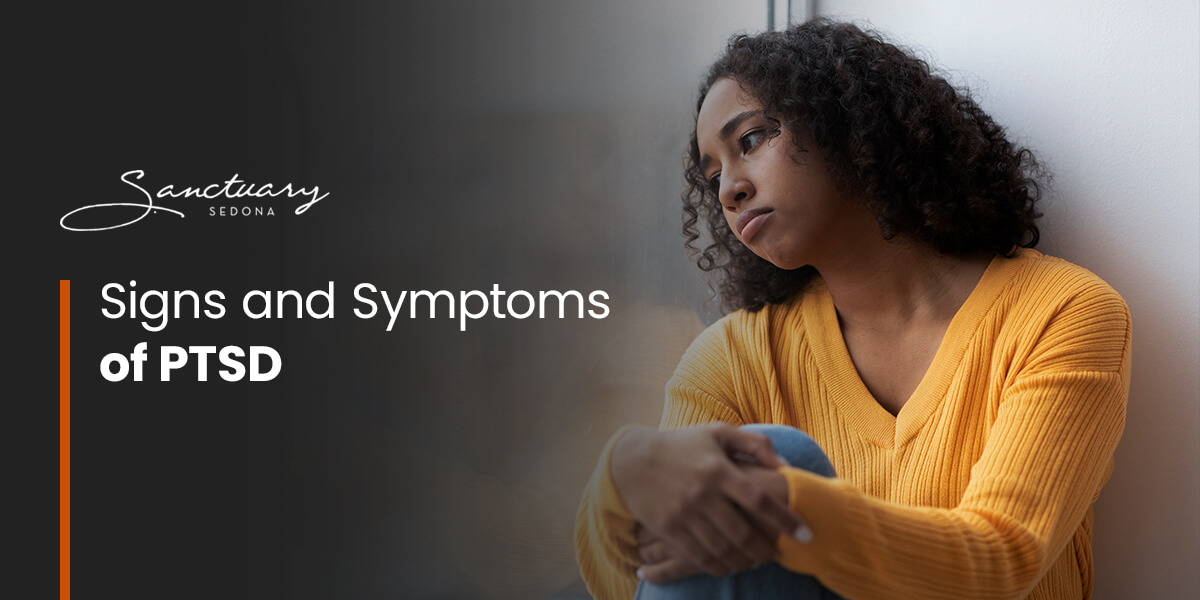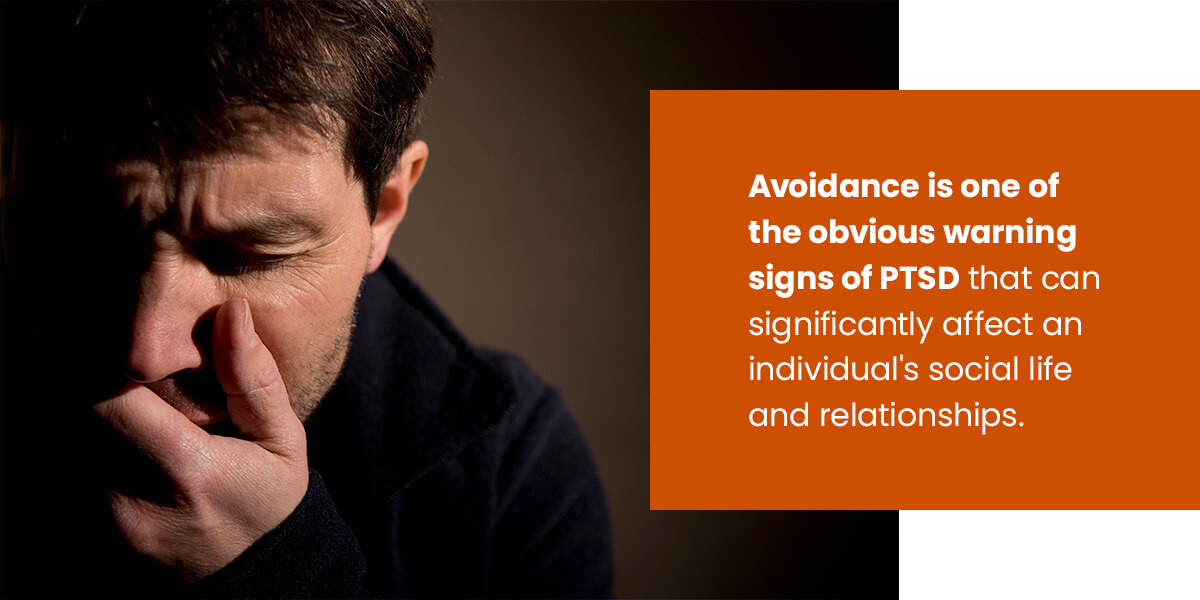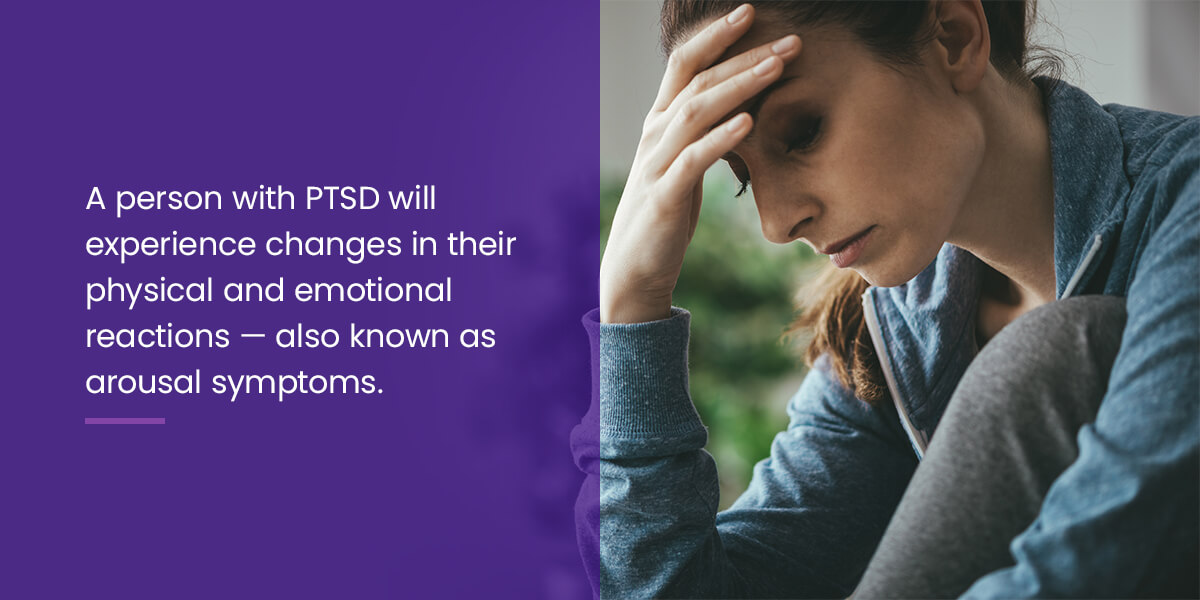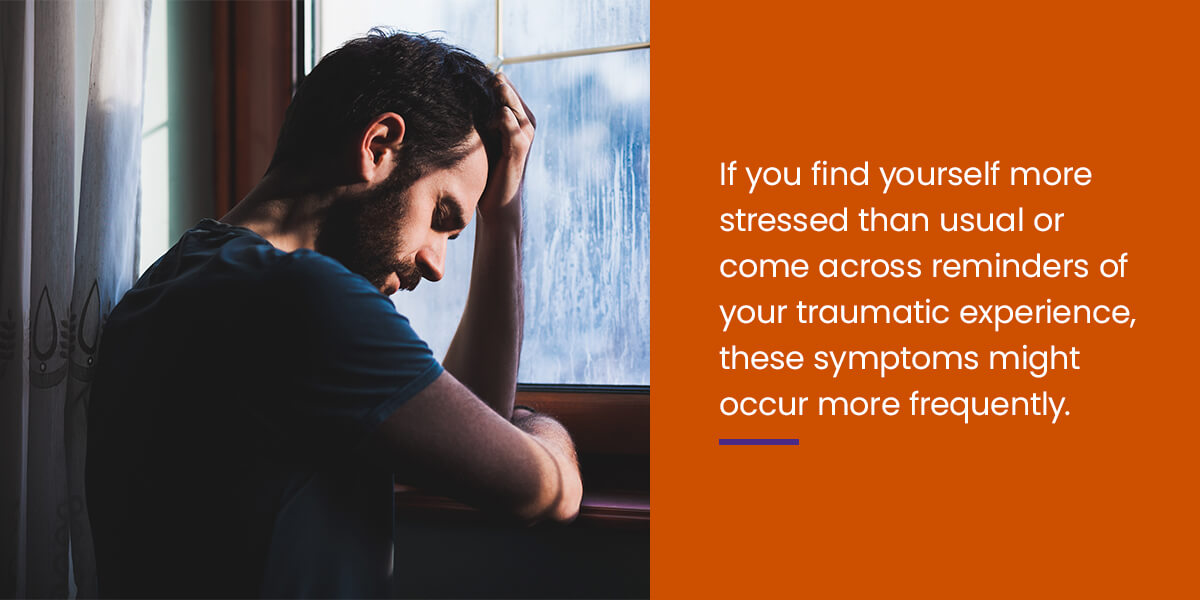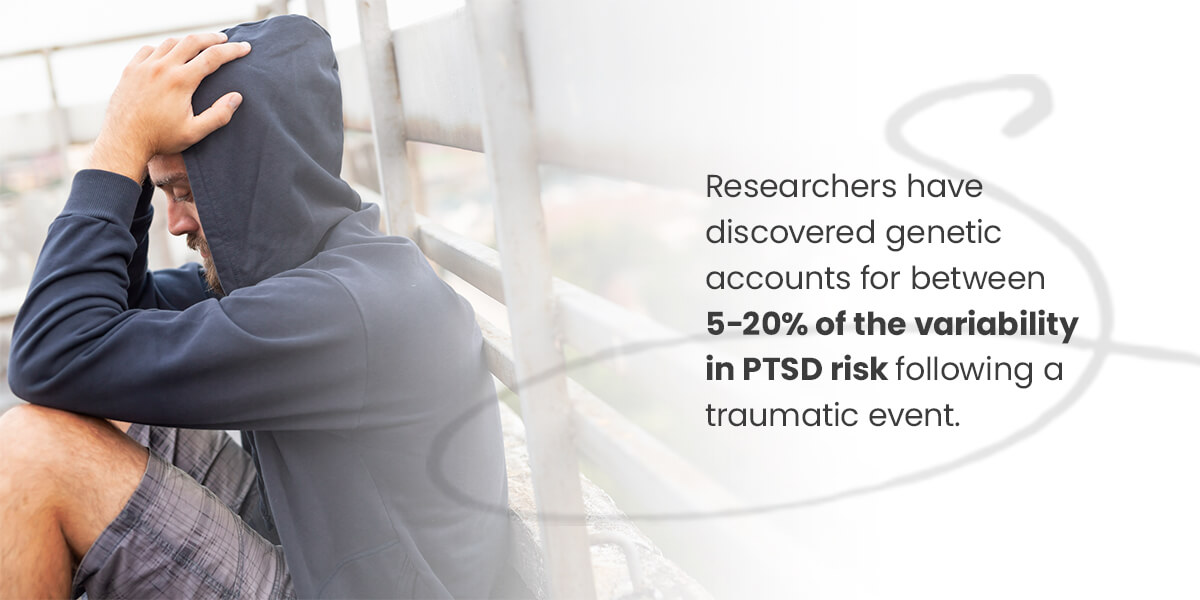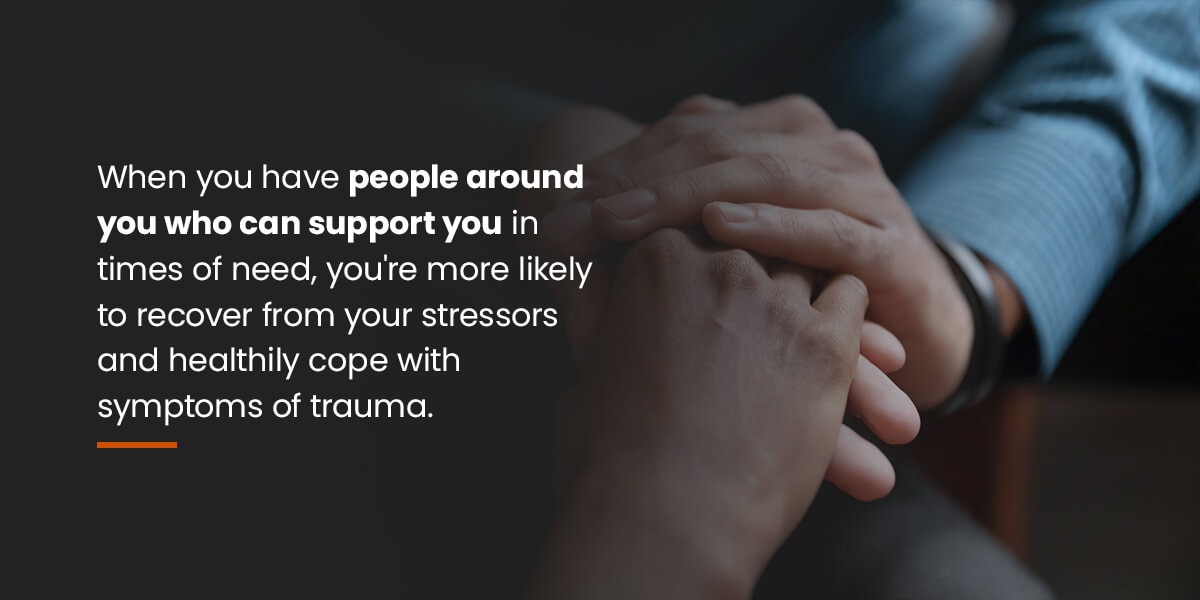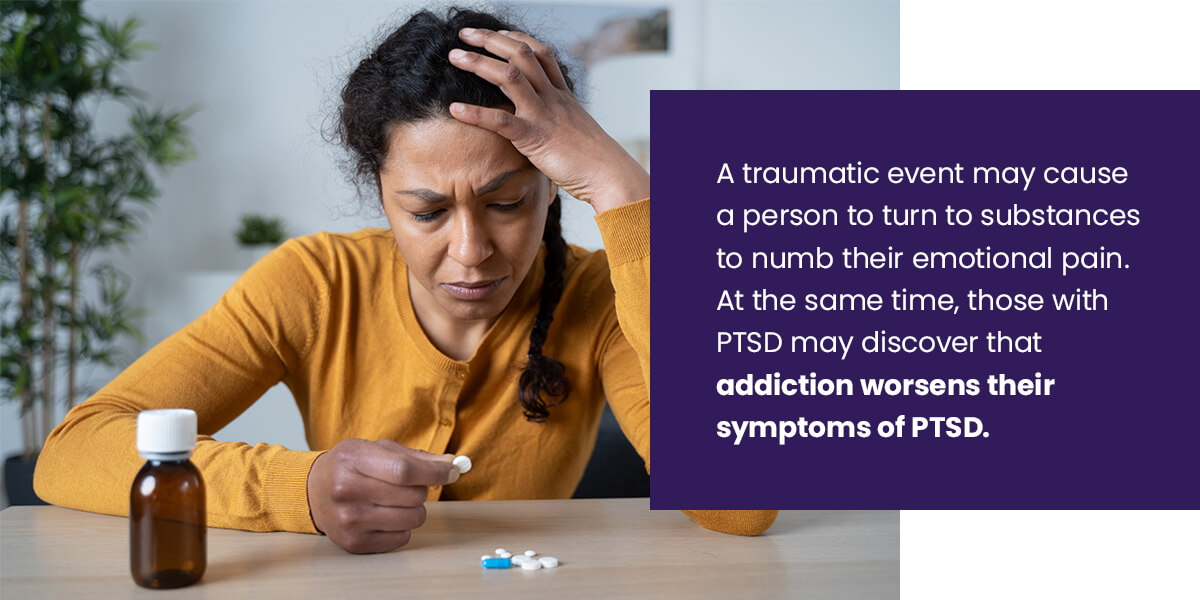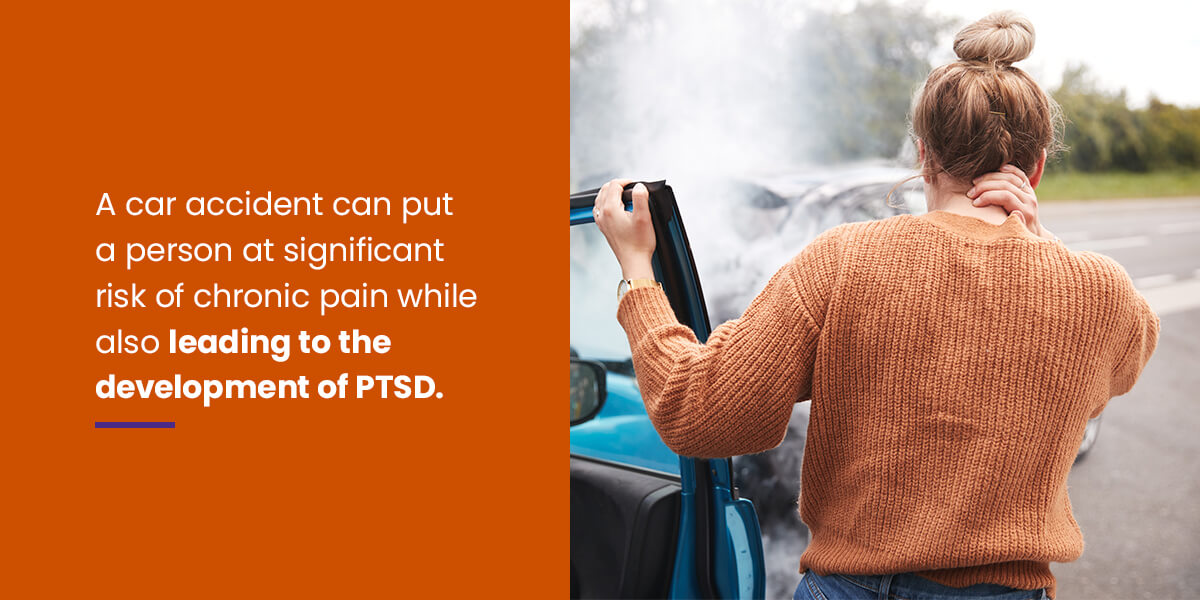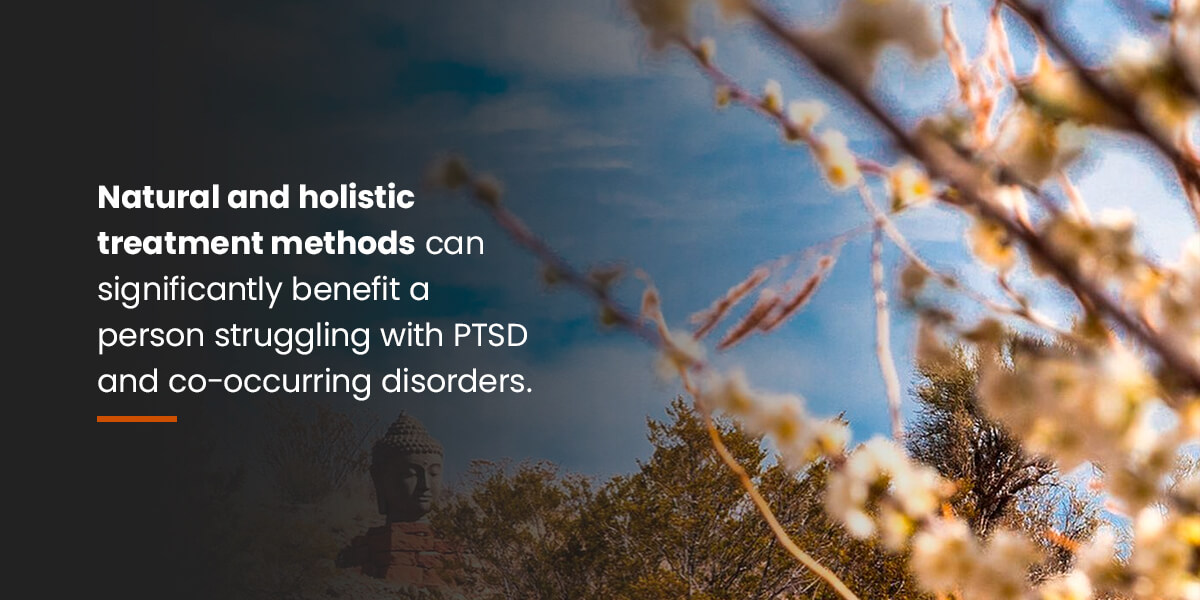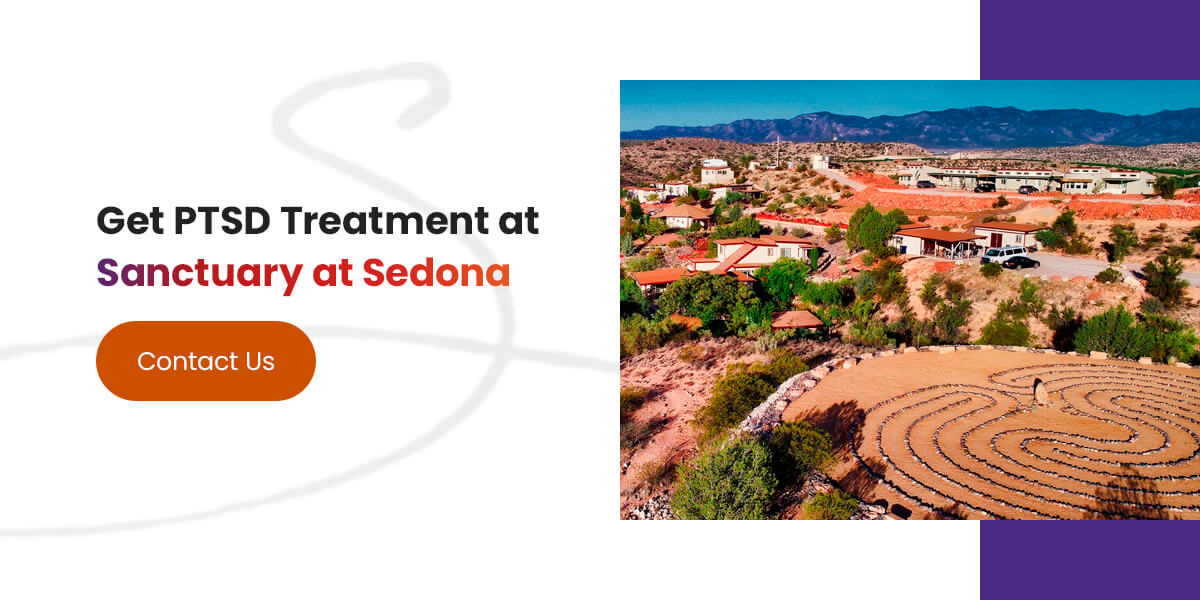Post-traumatic stress disorder (PTSD) is a severe mental health condition that affects nearly 12 million people. People with this condition have experienced or witnessed a traumatic event that causes them distressful symptoms, such as flashbacks, nightmares, severe anxiety and often uncontrollable thoughts about the event.
Due to these symptoms, many people can develop intense anxiety and dread about specific places or situations that remind them of their trauma. They’ll often go to great lengths to avoid these stressful situations and suffer from co-existing mental illnesses. Luckily, several treatment methods can help you if you or a loved one is struggling with this condition.
Learn the warning signs of PTSD, potential causes and treatment options below.
What Are the Effects of PTSD?
Post-traumatic stress disorder is a condition triggered by a terrifying, traumatic event. Many people have trouble adjusting to their lives after living or witnessing trauma, but they can see improvements in mood and function with time and care. You may have PTSD if your symptoms worsen or last for months or years and interfere with your daily obligations.
The symptoms of post-traumatic stress disorder tend to develop within one month of the traumatic experience, though they sometimes might not appear until years after the event. These symptoms can significantly impact your social life, work situations and relationships. They can also disrupt your day-to-day life and prevent you from taking care of typical everyday tasks.
Warning signs of PTSD often include intrusive flashbacks or memories, avoidance, decreased moods and changes in emotional and physical responses. Symptoms typically change over time and vary depending on the individual.
Intrusive Memories
Intrusive memories can cause a severe stress response to the body after witnessing or living a traumatic event. Symptoms can include:
- Uninvited distressing memories of the traumatic event
- Struggling with flashbacks or reliving the trauma in your mind as if it were happening again
- Frequent unsettling dreams about the traumatic event
- Severe emotional and physical distress when interacting with something that reminds you of the traumatic event
Avoidance Behaviors
Avoidance is one of the obvious warning signs of PTSD that can significantly affect an individual’s social life and relationships. When a person with PTSD struggles with avoidance, they’ll do anything to avoid thinking or talking about their traumatic experience. They may also avoid the places, activities or people that remind them of their trauma and go to great lengths to withdraw from these situations.
If left untreated, avoidance can develop into other conditions like panic disorder or agoraphobia as a means of survival.
Negative Changes in Thoughts or Moods
PTSD can cause depressive symptoms and lowered mood. Adverse changes in thoughts or mood can include:
- Experiencing negative thoughts about yourself, other people or the world
- Feeling hopeless about the future
- Inability to remember important aspects of the traumatic event
- Difficulty keeping close relationships
- Feeling detached or withdrawn from friends and family
- Losing interest in previously enjoyed activities
- Difficulty experiencing happiness or joy
- Feeling emotionally numb or as if you’re just “going through the motions”
Changes in Physical and Emotional Responses
A person with PTSD will also experience changes in their physical and emotional reactions — also known as arousal symptoms. Many individuals struggling with this condition blame themselves for the traumatic event and can sink into deep depression and anxiety. These emotional and physical changes might involve:
- Being easily startled or frightened
- Hypervigilance, or always being on guard for danger
- Difficulty sleeping and concentrating
- Self-destructive behavior like alcohol misuse or driving too fast
- Angry outbursts or mood swings
- Irritability or aggressive behavior
- Overwhelming feelings of guilt and shame
Long-Term Effects of PTSD
PTSD symptoms often evolve over time and vary in intensity. If you find yourself more stressed than usual or come across reminders of your traumatic experience, these symptoms might occur more frequently. For example, watching a violent movie or reading a news report about a similar incident may cause you to relive the intrusive memories of your own trauma.
When left untreated, PTSD symptoms can worsen. If you repeatedly experience traumatic events like abuse, neglect or violence, you may develop complex PTSD. Complex PTSD symptoms can involve:
- Feelings of guilt and shame
- Difficulty controlling emotions
- Feelings of horror and extreme helplessness
- Moments of dissociation or losing attention and concentration
- Physical symptoms like dizziness, stomach aches, chest pains or headaches
- Isolating from friends and family
- Relationship problems
- Self-destructive or risky behavior like self-harm or alcohol or drug misuse
Complex PTSD often occurs over several years and can disrupt a child’s development, self-confidence and behaviors as they get older. Adults with complex PTSD may lose trust in people and withdraw from others. This condition tends to be more severe if the traumatic event happened early in life, was caused by a parent or guardian, occurred repeatedly, occurred while you were alone, or the person responsible for the trauma is still in contact with you.
Complex PTSD can also cause suicidal thoughts. If you or a loved one is struggling with thoughts of self-harm or suicide, it’s essential that you seek emergency help right away.
Causes and Risk Factors of PTSD
While PTSD can happen to anyone who experiences a traumatic event, some people are more at risk of developing this condition than others. PTSD isn’t rare, nor is it a sign of weakness. Several factors can increase a person’s chances of developing PTSD, many of which are not under that person’s control.
For instance, if you were directly exposed to a traumatic situation or injured, you’re more likely to develop symptoms. Additionally, genetics and personal history can play a role in the development of PTSD after experiencing a traumatic event.
The following are risk factors and potential causes of post-traumatic stress disorder:
Genetics
Like most mental illnesses, PTSD has a vital genetic component. Researchers have discovered genetic accounts for between 5-20% of the variability in PTSD risk following a traumatic event.
Additionally, scientists are continually researching ways in which people might epigenetically inherit trauma. Epigenetics is the study of how situations and behaviors can change how your genes work. These changes don’t necessarily affect your DNA sequence but rather how your body reads that DNA.
For instance, research shows that stress during pregnancy can result in intergenerational trauma being passed down. Parental stress has been reflected in children with autism spectrum disorders, schizophrenia and attention-deficit hyperactivity disorder (ADHD).
Nonbiological ways trauma can be passed down between generations include dysfunctional family dynamics that result from trauma, such as codependency, parental dissociation and unhealthy attachment styles, family stories of traumatic events and memories and photographs.
Environmental Factors
Since PTSD develops when a person experiences, witnesses or learns of a traumatic event, external factors are critical to informing the risk for PTSD. Experiencing multiple traumas and environmental stressors puts a person at a higher risk of developing this condition. Examples of outside forces that could lead to post-traumatic stress disorder include:
- Exposure to abuse, neglect or violence
- Sexual or physical assault
- The unexpected death of a loved one
- War and combat exposure
- A natural disaster such as a flood, earthquake or tornado
- Injuries and vehicle accidents
People affected by traumatic events and who may develop this condition can include soldiers returning from combat, families of victims, emergency personnel and rescue workers. Those who experience combat might also experience a mild traumatic brain injury, which can further complicate symptoms. Early childhood trauma has also been shown to put people at greater risk of developing PTSD and can cause lifelong problems.
Personal History
Since everyone reacts to traumatic events differently, not everyone who has trauma will develop PTSD. People have different abilities to manage stress, fear and threats posed by traumatic situations. Facets of your personal history can put you at higher risk of developing this psychiatric condition than others.
You may be at more risk of PTSD after a traumatic event if you:
- Are female
- Have a preexisting anxiety disorder or other mental health condition
- Have an inadequate support system
- Have a lack of healthy coping skills
- Experience chronic stress
Women are twice as likely to develop PTSD than men, which could come down to a couple of reasons. For one, women are more likely to experience sexual assault and child sexual abuse, putting them at greater risk. Next, most men might not report their trauma or symptoms of PTSD for fear of being victimized or appearing weak. For this reason, they’re vastly underrepresented.
Also, whether you have a strong support system can play a role in the severity of symptoms and how your PTSD develops. When you have people around you who can support you in times of need, you’re more likely to recover from your stressors and healthily cope with symptoms of trauma.
PTSD and Co-Occurring Disorders
Approximately 80% of people diagnosed with PTSD have received one or more mental health diagnoses. PTSD is also linked to physical health problems, functional impairments, reduced quality of life and relationship issues.
Sometimes, these conditions are diagnosed before PTSD, while others are diagnosed after. It can be helpful to learn the varying co-occurring disorders associated with PTSD to receive an integrated treatment plan that addresses these conditions.
The following is a list of co-occurring mental and physical health disorders often associated with PTSD:
Substance Use Disorders
Most people who struggle with addiction have also experienced past trauma. At the same time, up to 66% of people diagnosed with PTSD also live with co-occurring substance use disorders. These conditions are bidirectional, meaning they can affect each other in different ways.
For instance, a traumatic event may cause a person to turn to substances to numb their emotional pain. At the same time, those with PTSD may discover that addiction worsens their symptoms of PTSD.
The following are potential ways in which substance use might worsen PTSD symptoms:
- Interferes with sleep: People with PTSD may experience sleep problems such as insomnia and intense, disturbing nightmares about their traumatic events. As a result, some may attempt to use alcohol or drugs to help them sleep, which can have the opposite effect as intended since drug and alcohol consumption can worsen sleep quality and PTSD symptoms.
- Affects your concentration: Those with PTSD have difficulty concentrating, a symptom that heavy drinking can often exacerbate.
- Alters your mood: PTSD can cause an individual to emotionally withdraw from others and become depressed or agitated — all things that worsen with alcohol and drug consumption.
- Perpetuates the cycle of avoidance: Addiction can be an unhealthy way to avoid triggers, which is also a symptom of PTSD.
Depression or Major Depressive Disorder
Many people diagnosed with PTSD also have major depressive disorder or depression. Depression is a mood disorder that can significantly impede one’s ability to function in everyday life. Symptoms of depression can include:
- Feelings of intense sadness and hopelessness
- Sleeping problems
- Anxiety
- Recurring thoughts of suicide or death
Unsurprisingly, those who experience a traumatic event and develop PTSD will also deal with depression. The ensuing symptoms after a traumatic event can resemble depression and may include social isolation, feelings of guilt and losing interest in previously enjoyed hobbies and activities. For instance, those who return from war often deal with guilt over what they’ve experienced, leading to depression.
Anxiety Disorders
Anxiety disorders cause persistent, uncontrollable feelings of anxiousness that worsen over time.
Common anxiety disorders that might co-occur with PTSD include:
- Generalized anxiety disorder (GAD): This condition is characterized by unrelenting feelings of anxiety about life and everyday activities that aren’t ordinarily worrisome. GAD can significantly disrupt a person’s life and cause problems in their careers and relationships. As a result, it makes sense that PTSD might cause GAD since it involves extreme anxiety related to specific situations and everyday tasks. Research suggests roughly one in six people with PTSD will experience GAD at some stage in their condition.
- Panic disorder: Panic disorder causes recurring and unexpected panic attacks that might cause rapid heartbeat, chills, sweating, trembling and chest pain or difficulty breathing. These symptoms are similar to those of a person subjected to situations that remind them of past trauma. In fact, 69% of patients who seek treatment for PTSD also meet the criteria for panic attacks. At the same time, those with panic disorder often report a history of experiencing traumatic events.
- Social anxiety disorder (SAD): Social anxiety disorder isn’t just shyness — it’s unending anxiety over social situations due to an often irrational fear of humiliation. Coming in contact with these feared situations can sometimes cause panic attacks, similar to those of PTSD when experiencing triggers. In fact, 14-46% of people with SAD also have PTSD, and SAD is highest among veterans with post-traumatic stress disorder.
Physical Health Problems
Those with certain physical health conditions might experience PTSD and vice versa. For example, losing a limb in combat can cause physical and psychological effects. Injuries that cause PTSD can also lead to chronic pain, which impacts nearly one in five Americans. A car accident can put a person at significant risk of chronic pain while also leading to the development of PTSD.
Additionally, the neurochemical changes from PTSD may leave one vulnerable to hypertension and heart disease. These changes can also cause thyroid and hormonal function problems and increase one’s susceptibility to infections and immune system disorders associated with PTSD.
Can You Recover From a PTSD Disorder?
The long-term effects of PTSD can lead to complications if left untreated. Thankfully, natural and holistic treatment methods can significantly benefit a person struggling with PTSD and co-occurring disorders.
Holistic treatment for PTSD attacks can include the following:
Nutrition Education
The Sanctuary at Sedona provides healthy gourmet meals because we understand that PTSD affects the entire body and can worsen with a poor diet. From your gut to your brain, the signals speak to one another and can set each other off. Working with PTSD patients means revitalizing the body to replenish the mind, and eating nutrient-dense foods carries a vast amount of mental and physical health benefits.
Yoga and Mindfulness Meditation
Yoga and meditation involve breathing practices to soothe and alleviate symptoms of mental illness and restore the spirit. Through deep breathing and body movement, yoga can help people with PTSD by reducing emotional and physical reactions to triggers and improving moods. At the same time, mindfulness meditation helps PTSD by relaxing the body and helping you focus on the present moment rather than the memories and stressors caused by trauma.
Therapies
Therapy has been shown to help reduce triggers in patients struggling with PTSD. In particular, cognitive behavioral therapy (CBT) can reduce panic responses and the severity of these reactions while diminishing avoidance behaviors.
Additionally, eye movement desensitization and reprocessing (EMDR) therapy has shown significant improvements for those with PTSD since it involves safely addressing upsetting memories, feelings and thoughts related to your trauma.
Post-Traumatic Stress Disorder FAQ
Below, we answer a few of the most common questions we receive about post-traumatic stress disorder:
1. How Can I Treat PTSD Naturally?
Therapies and dietary changes can treat PTSD without the use of medicines.
Supplements, IV drips and nutritional foods can help revitalize the body and repair the brain damage caused by PTSD. Behavioral therapies can also “reprogram” the brain by addressing the causes of PTSD attacks so the past doesn’t continue to take hold of the present.
2. How Can I Help a Loved One With PTSD?
If you have a loved one who’s gone through pain or injury and shows signs of PTSD, it’s always important to show them that you’re there for them. A strong support system can significantly improve their chances of recovering from PTSD and may encourage them to seek professional treatment.
3. How Common Is PTSD?
Going through trauma isn’t rare. It’s estimated that almost half of U.S. adults will experience at least one traumatic event in their lives. Among these individuals, 6% will develop PTSD.
Additionally, women are more likely to experience sexual assault and child sexual abuse, while men are more likely to experience physical assault, accidents or witness disasters or death.
4. How Does PTSD Affect the Brain?
The brain secretes stress hormones such as cortisol due to PTSD attacks. Over time, cortisol can damage the hippocampus, amygdala and prefrontal cortex if PTSD is left untreated.
Get PTSD Treatment at Sanctuary at Sedona
PTSD can cause severe complications and affect a person’s mind, body and soul. As a result, a comprehensive, holistic approach can greatly benefit you or a loved one struggling with this complex condition.
The Sanctuary at Sedona provides science-backed holistic treatment to alleviate symptoms of PTSD, address fears and stressors and improve your overall quality of life. Our personalized PTSD treatment programs involve nutrition education, exercise, one-on-one therapy and much more. You’ll work with compassionate, highly trained professionals in a serene setting to recover from PTSD and take back your life.
To learn more about our PTSD treatment plans, get in touch with us today.

